- Excellent optical quality, sharpness, pattern, well made - Japanese assembly - heavy!
- Unclear situation with unstable autofocus of some instances. Heavy :)
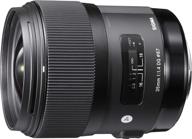
38
·
Average

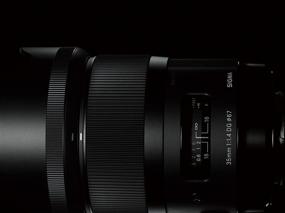
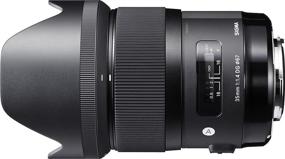

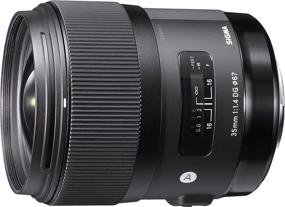



When it comes to capturing stunning images, professional photographers and photography enthusiasts understand the significance of having a high-quality lens. Introducing the Sigma 35mm F1.4 Art DG HSM Lens for Nikon, a powerful lens that offers exceptional performance and versatility. Designed for both DX and FX Nikon cameras, this lens is a must-have for anyone looking to take their photography to the next level.
Unparalleled Optics and Performance
Equipped with a 35mm focal length and a maximum aperture of F1.4, this lens delivers exceptional clarity, sharpness, and bokeh effect, allowing you to capture breathtaking images with stunning detail. Whether you're shooting landscapes, portraits, or low-light scenes, the Sigma 35mm F1.4 Art DG HSM Lens ensures outstanding results every time.
Seamless Compatibility
One of the standout features of the Sigma 35mm F1.4 Art DG HSM Lens is its compatibility with all current Nikon cameras, including both DX and FX models. This means that regardless of the camera you own or plan to upgrade to, this lens will seamlessly integrate with your setup. Say goodbye to the hassle of switching lenses or compromising on quality.
Superior Autofocus and Manual Control
Thanks to its ring-type ultrasonic-type AF motor, the Sigma 35mm F1.4 Art DG HSM Lens offers lightning-fast and precise autofocus, ensuring your subjects are always in sharp focus. Additionally, the lens provides full-time manual focusing, giving you complete control over your shots. Whether you prefer automatic or manual focus, this lens caters to your unique shooting style.
While the Sigma 35mm F1.4 Art DG HSM Lens is an exceptional choice, it's essential to explore other lenses in the market to find the perfect match for your specific photography requirements. Popular alternatives to consider include wide-angle lenses for capturing breathtaking landscapes, telephoto lenses for wildlife and sports photography, and macro lenses for stunning close-up shots. Each lens has its own unique characteristics and benefits, so be sure to explore and experiment to find the lens that best suits your style and creative vision.
The Sigma 35mm F1.4 Art DG HSM Lens is an invaluable tool for both professional photographers and enthusiasts alike. Its versatile focal length makes it suitable for various genres, including portraits, street photography, and even documentary work. Whether you're a wedding photographer capturing intimate moments or an aspiring artist experimenting with different styles, this lens empowers you to unleash your creativity and achieve stunning results. With its exceptional optics, seamless compatibility, and superior autofocus capabilities, the Sigma 35mm F1.4 Art DG HSM Lens is a true game-changer in the world of lenses.
Here are some of the areas where the Sigma 35mm F1.4 Art DG HSM Lens can be used:
35mm focal length, 52.5mm equivalent focal length on APS-C cameras, 56mm equivalent focal length on Canon APS-C cameras. F1.4 maximum aperture; F16 minimum, This model is compatible with all current Nikon cameras (both DX and FX). Ring-type ultrasonic-type AF motor with full-time manual focusing. 67mm filters,0.30m/11.81" minimum focus. Maximum Magnifications-1:5.2. Angle of View-63.4o. Available in Canon EF, Nikon F (FX), Pentax KAF3, Sony Alpha, Sigma SA mounts. Please refer the User Manual which is in the Product Box before use.
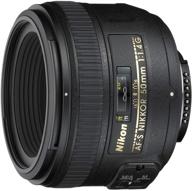
📷 Nikon AF-S NIKKOR 50mm f/1.4G Lens with Auto Focus: Perfect for Nikon DSLR Cameras

76 Review
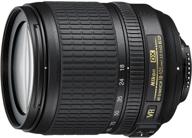
New Nikon 18-105mm Vibration Reduction 📷 Zoom Lens with Auto Focus for Nikon DSLRs

104 Review
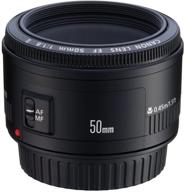
Canon EF 50mm f/1.8 II Fixed Lens - Discontinued by Manufacturer

93 Review
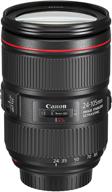
Black Canon EF 24-105mm f/4L IS II USM Lens - Model 1380C002

78 Review

📷 Nikon AF-S NIKKOR 50mm f/1.4G Lens with Auto Focus: Perfect for Nikon DSLR Cameras

76 Review
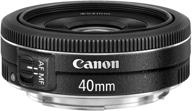
Canon EF 40mm f/2.8 STM Lens - Fixed Black (6310B002) for US Cameras

76 Review

Canon EF 50mm f/1.8 II Fixed Lens - Discontinued by Manufacturer

93 Review

New Nikon 18-105mm Vibration Reduction 📷 Zoom Lens with Auto Focus for Nikon DSLRs

104 Review